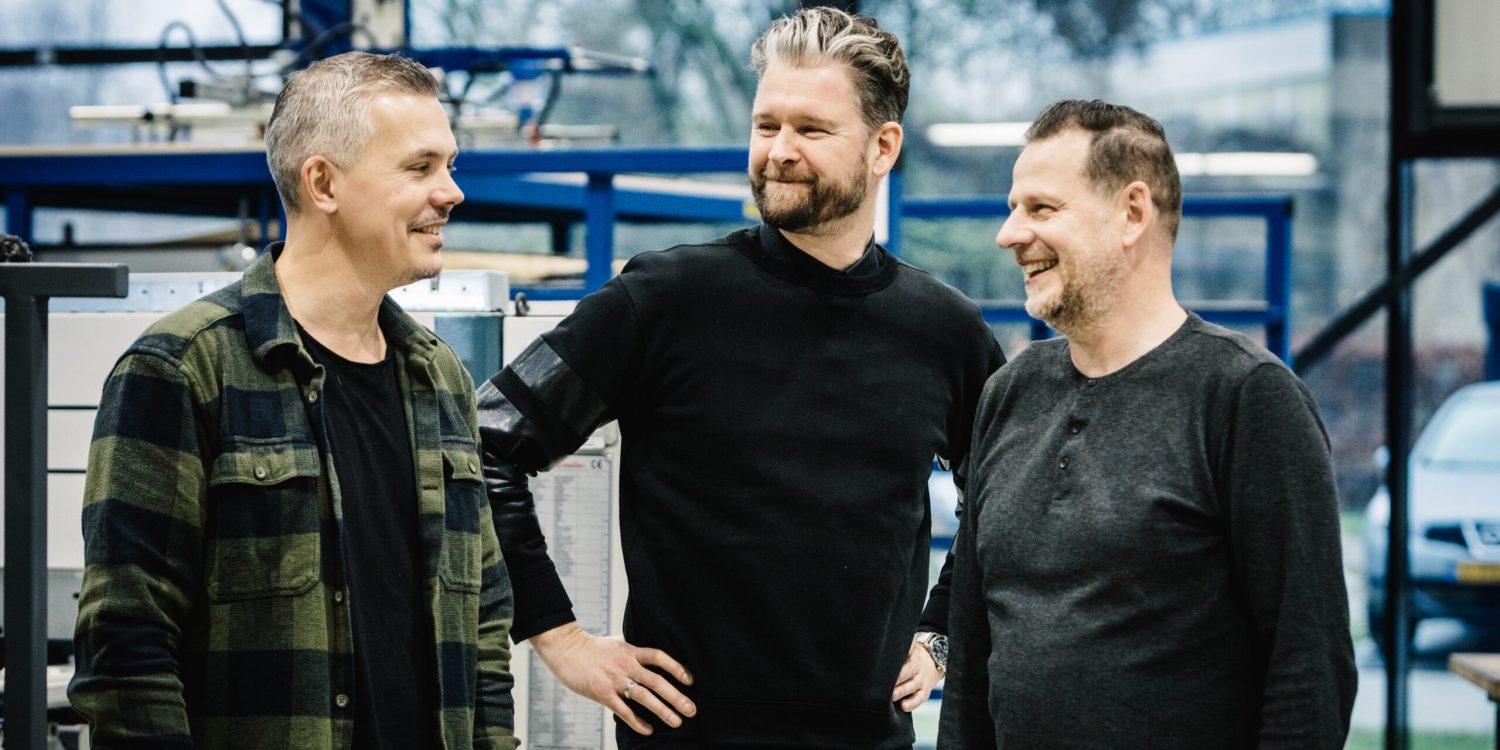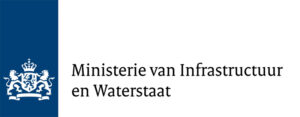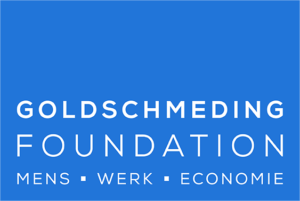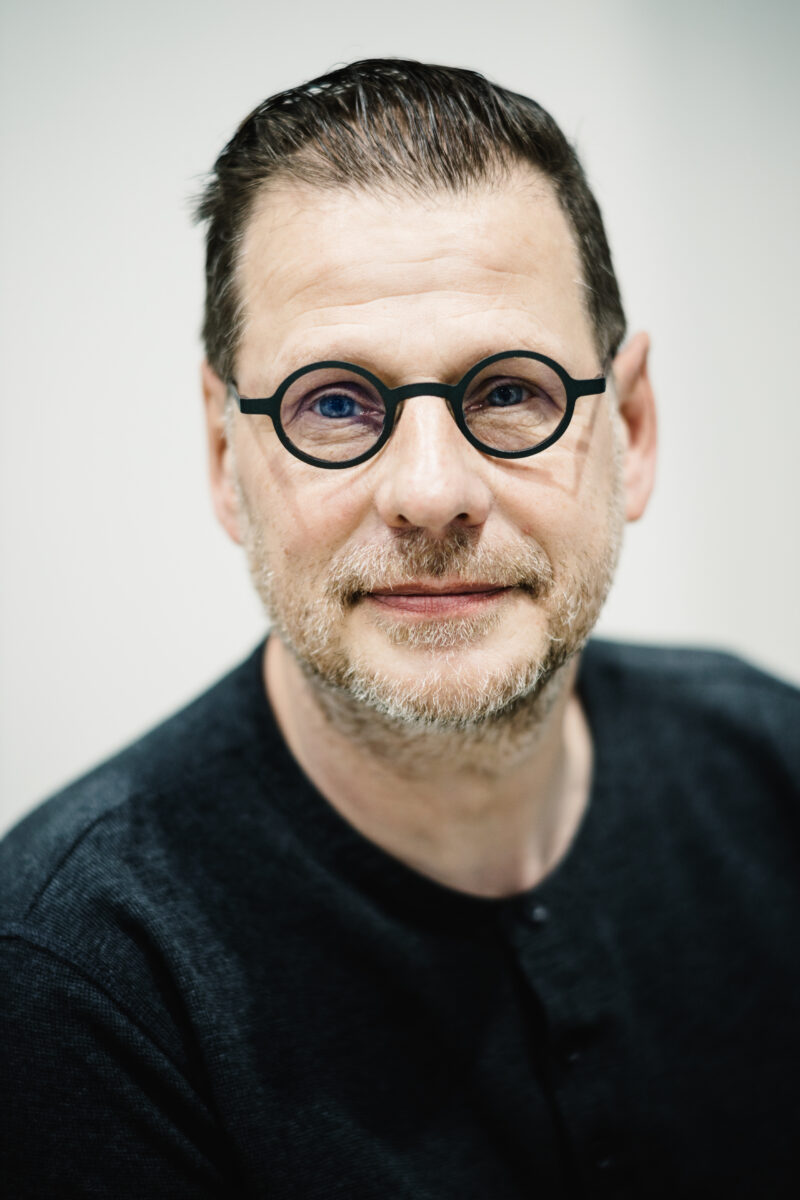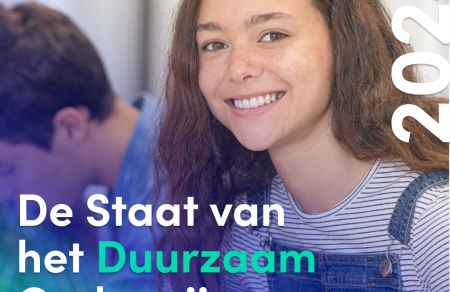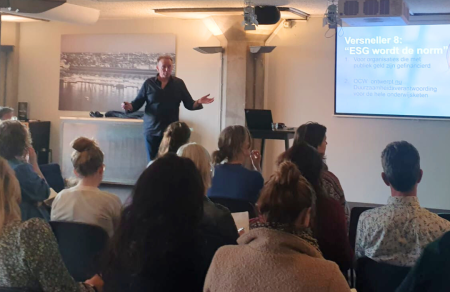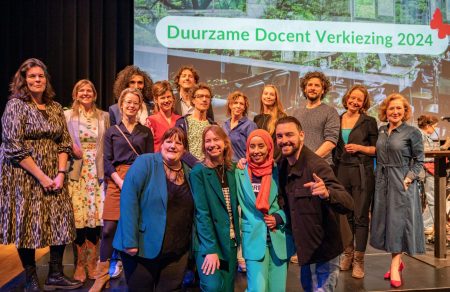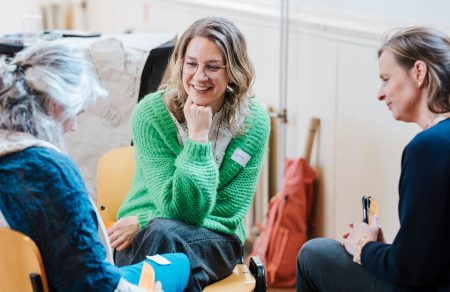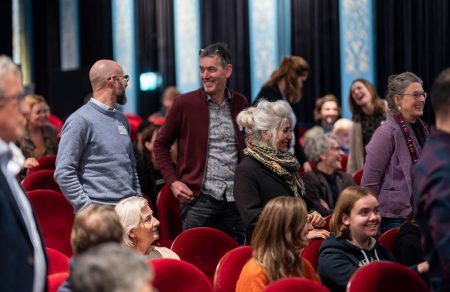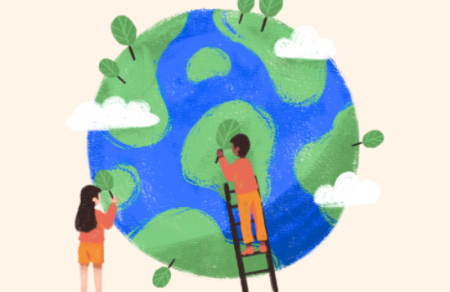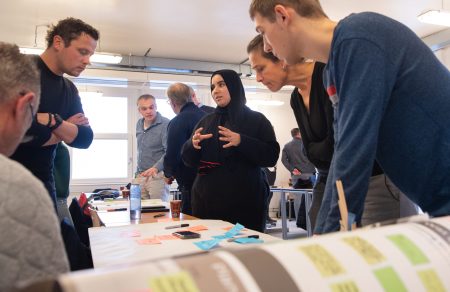This article is part of the Regioportret Utrecht (article 2/3). With it we visualize how educational institutions, companies and governments in the Utrecht region work together on 'circular skills': the skills needed in the circular economy of the future. We hope to inspire other regions to accelerate the transition to the circular economy.
Read article 1/3 hereRead article 3/3 here
Sacha Tippel, Jeroen Voeten and Wouter Oostendorp agree on one thing wholeheartedly: to prepare students for a circular economy, it is essential to be in constant contact with companies, with "the outside world. Teacher educators and hybrid MBO teachers are therefore doing everything they can to integrate that outside world into their teaching. "It is important to have a network in practice of people who grant you something," he says.
Jeroen and Wouter, in addition to their jobs as Energy Transition and Built Environment teachers respectively at ROC Midden Nederland, both work in the business world. Jeroen is a member of the management team of a company that provides security and data management solutions in energy infrastructure, among others. Wouter has his own architectural firm and is an urban planner for the municipality of Soest. The fact that these teachers have one leg in education and the other in practice is something that HU teacher Sacha - who trains students to become, among other things, MBO Technology teachers - sees as a great advantage. "That combination is essential. As a teacher, I don't have time to keep up with all the developments in the circular field in business - I focus on training teachers as well as I can. You can't be an expert in everything. Jeroen and Wouter's expertise is precisely to bring business and MBO closer together from their hybrid role. It's about experts from different contexts working together to develop future-oriented education."
One project in which Jeroen believes this has worked well is "Strijkviertel. "Business park Strijkviertel is a future industrial area in Utrecht, northwest of where the A2 and A12 intersect. It is being developed in a sustainable and circular way into a place to work, recreate and play sports. The municipality of Utrecht wants to make it an energy-neutral area and has involved students from ROC Midden Nederland, among others, to work together on this energy issue and its spatial integration. In this - incidentally fictitious - exercise, the students learned how to design an energy-neutral industrial area based on a real master plan. In cooperation with other disciplines, they had to design a spatial integration of sustainable measures in such a way that the area would become a nice place to be. Incredibly instructive."
Adapting to the pace of practice
Connecting with practitioners is not always easy, Sacha notes. "I asked a designer friend if he wanted to come and give a guest lecture. He said, 'that's fine. But I can't do it for three weeks, because I have a lot of client meetings scheduled in the coming period.' And ícause of the teaching schedule, I can only come on Mondays. Also my 'clients' - the students and thus the schedule - come first. Then you can forget it. Both of us are not flexible enough, and companies should be paid better for these services. After all, education is also a 'product'." Wouter recognizes that educational organizations are often not attuned to the outside world. "Indeed, the outside world passes education by at a rapid pace. It is therefore important to have a network in practice of people who will grant you something. You only get that done if you show that you maintain your knowledge, that is, that you connect with those entrepreneurs or municipal officials - that you also have something interesting to offer them. By definition, that means you can't blindly repeat your curriculum from this year next year. By then it will be outdated."
"Who has a used cell phone?"
In addition to connecting with practice, the teachers also try to prepare their students for the circular economy in other ways. Jeroen: "It's about a different way of thinking. For example, from possession to use: do you ask for a fluorescent bulb or for 'lighting'? And as a producer, how do you make sure your product lasts longer?" Jeroen also involves his students' personal choices. "Then in class I ask who has a new mobile and who has a second-hand one. Then we discuss the reasons for that choice and the business models behind phones. Then you usually see some pennies drop. Then they suddenly realize that their own choices can also contribute to a more circular economy." Sacha: "When students design something with me, one of the seven aspects of the R-ladder must be included, so 'refuse' or 'reuse' for example. And besides learning to design with this R-model, they also have to translate it to their own educational practice: designing teaching materials for their own VO or MBO students." That, too, is circularity, Sacha believes. "Because eventually I hope that one day their students will come to do teacher training, and by then they will be much more skilled in circularity than their teachers are now. So we want our students to train their students to be 'circular citizens,' rather than purely engineering teachers."
Key circular skill: seeing the context
The circular skills teachers want to teach their students are not always recognized as such, Wouter explains. "Circular skills are often thought of as 'being able to assemble a building in a circular way,' using circular materials. But just as important is a circular mindset, being able to think at scale. A small action, like a change in materials in one place, doesn't make a difference. But if you implement that in a lot of places, it does have an impact. Circular thinking actually means: all the standard things you know - the three p's, the trias energetica -think about: how is a building or a project going to deliver value? So not reducing more consumption, or using as few fossil fuels as possible. No, really radically saying: this project is going to deliver value. Once the students have mastered this way of thinking, whether with energy, with building materials, or with their own consumption behavior, they can also appreciate the technical side. Then they see: I can bet on solar panels, but in this case water purification might be much more important. They then see the context of the task."
Dare to innovate
Finally, the men argue for more confidence, both in teachers and students. Because, according to them, circular projects by definition have an innovative character and that means that it does not always fit into the measurement methods used by educational institutions. Wouter: "Innovation is an ongoing process in which, together with the parties in the field and with the students, you notice what works and what doesn't work. That room for creativity is not measurable, as it is about vistas. That is why it is important to organize flexibility in education and also in companies and institutions, without it having to produce immediate results. That sounds scary to some organizations." What you can tell that something is working is the enthusiasm, says Wouter. "Both with the students and with the entrepreneurs. Do the parties from your network come back? Then you are doing something right. This immediately profiles the school to the outside world." Room for creativity also makes the profession much more fun, Jeroen believes. "Make sure you can network, that you can keep getting your knowledge from outside. Don't stubbornly keep rehashing your lessons and repeating them every year. No, break through that and you'll see that it's much more fun."
Author: Annemarie Teuns
Photography: Pim Geerts
Want to learn more about educating for an inclusive, sustainable future?
Sustainability Skills
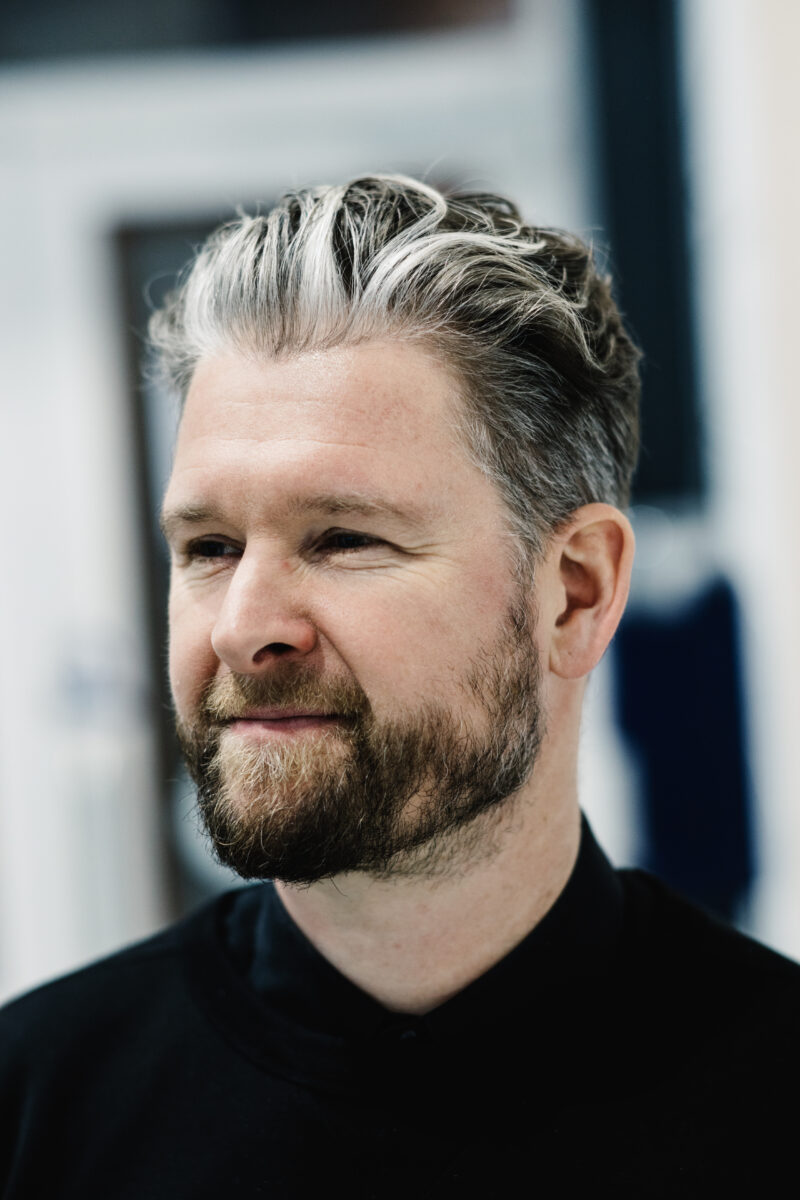
As a hybrid teacher, Wouter has one leg in education and the other in business. He teaches on the Built Environment in vocational training at ROC Midden Nederland. He also works in the business world as an architect at Studio OxL and as an urban planner at the municipality of Soest. Space for creativity and enthusiasm are, as far as he is concerned, essential in aligning education with practice.
Sacha Tippel
Sacha is a teacher trainer at the Hoge School Utrecht, where he trains students to become MBO teachers of Technology, among other things. He brings the theme of circularity back into teacher training and hopes that they pass it on to the next generation of learners. This is how we learn the necessary skills and train together to become circular citizens.

Jeroen also works as a hybrid lecturer at ROC Midden-Nederland. His expertise is in the field of Energy Transition. In business, he is a member of the management team of a company that provides security and data management solutions in energy infrastructure, among others. His goal is to teach students a more circular form of thinking in addition to connecting them to the real world.
